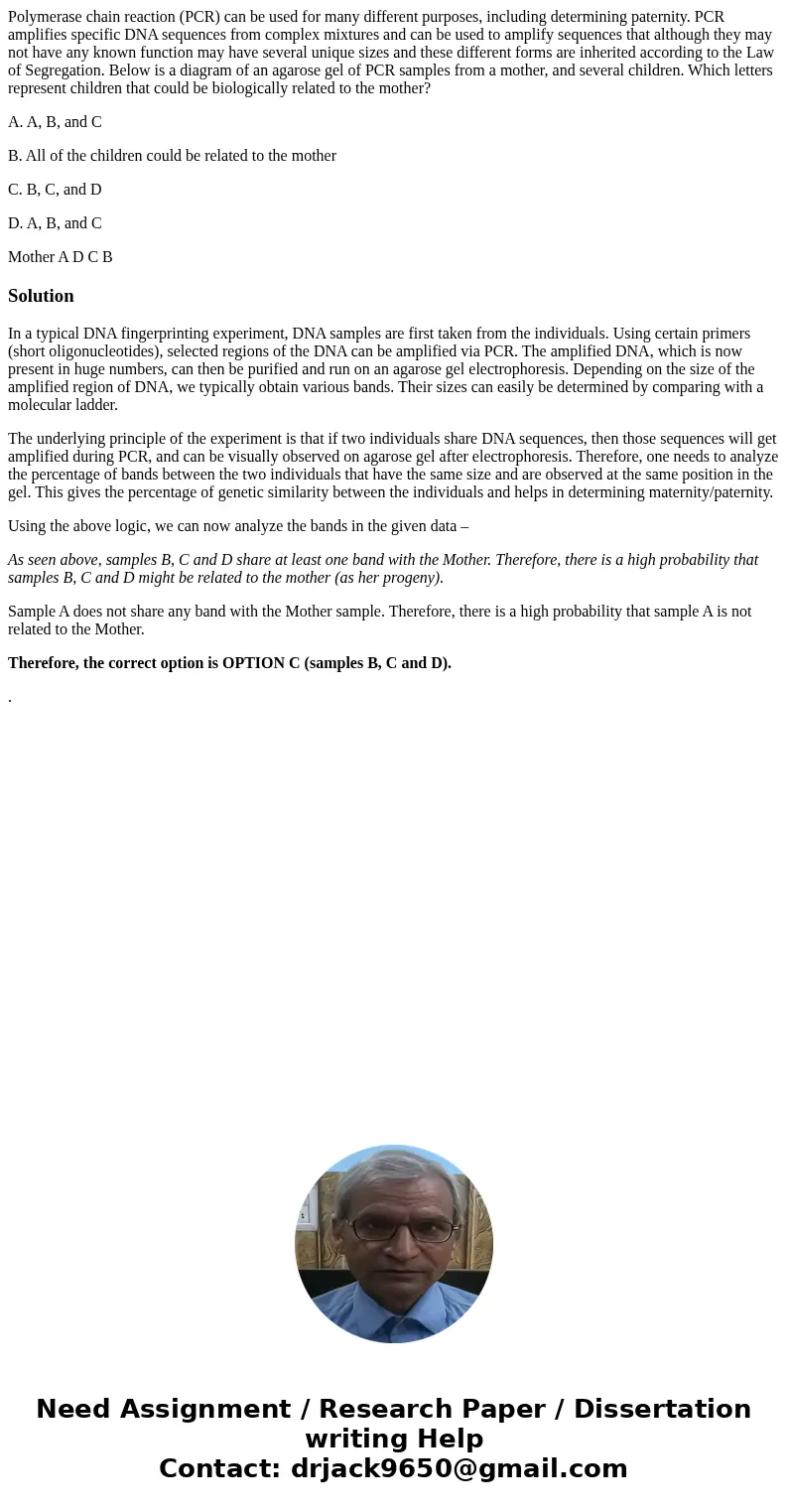Polymerase chain reaction PCR can be used for many different
Polymerase chain reaction (PCR) can be used for many different purposes, including determining paternity. PCR amplifies specific DNA sequences from complex mixtures and can be used to amplify sequences that although they may not have any known function may have several unique sizes and these different forms are inherited according to the Law of Segregation. Below is a diagram of an agarose gel of PCR samples from a mother, and several children. Which letters represent children that could be biologically related to the mother?
A. A, B, and C
B. All of the children could be related to the mother
C. B, C, and D
D. A, B, and C
Mother A D C BSolution
In a typical DNA fingerprinting experiment, DNA samples are first taken from the individuals. Using certain primers (short oligonucleotides), selected regions of the DNA can be amplified via PCR. The amplified DNA, which is now present in huge numbers, can then be purified and run on an agarose gel electrophoresis. Depending on the size of the amplified region of DNA, we typically obtain various bands. Their sizes can easily be determined by comparing with a molecular ladder.
The underlying principle of the experiment is that if two individuals share DNA sequences, then those sequences will get amplified during PCR, and can be visually observed on agarose gel after electrophoresis. Therefore, one needs to analyze the percentage of bands between the two individuals that have the same size and are observed at the same position in the gel. This gives the percentage of genetic similarity between the individuals and helps in determining maternity/paternity.
Using the above logic, we can now analyze the bands in the given data –
As seen above, samples B, C and D share at least one band with the Mother. Therefore, there is a high probability that samples B, C and D might be related to the mother (as her progeny).
Sample A does not share any band with the Mother sample. Therefore, there is a high probability that sample A is not related to the Mother.
Therefore, the correct option is OPTION C (samples B, C and D).
.

 Homework Sourse
Homework Sourse